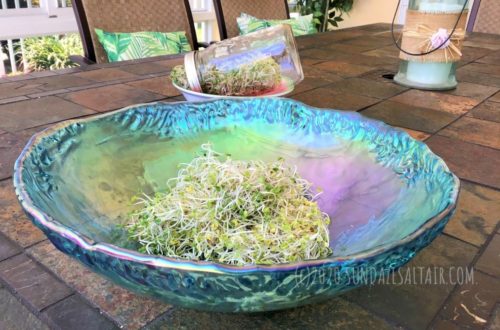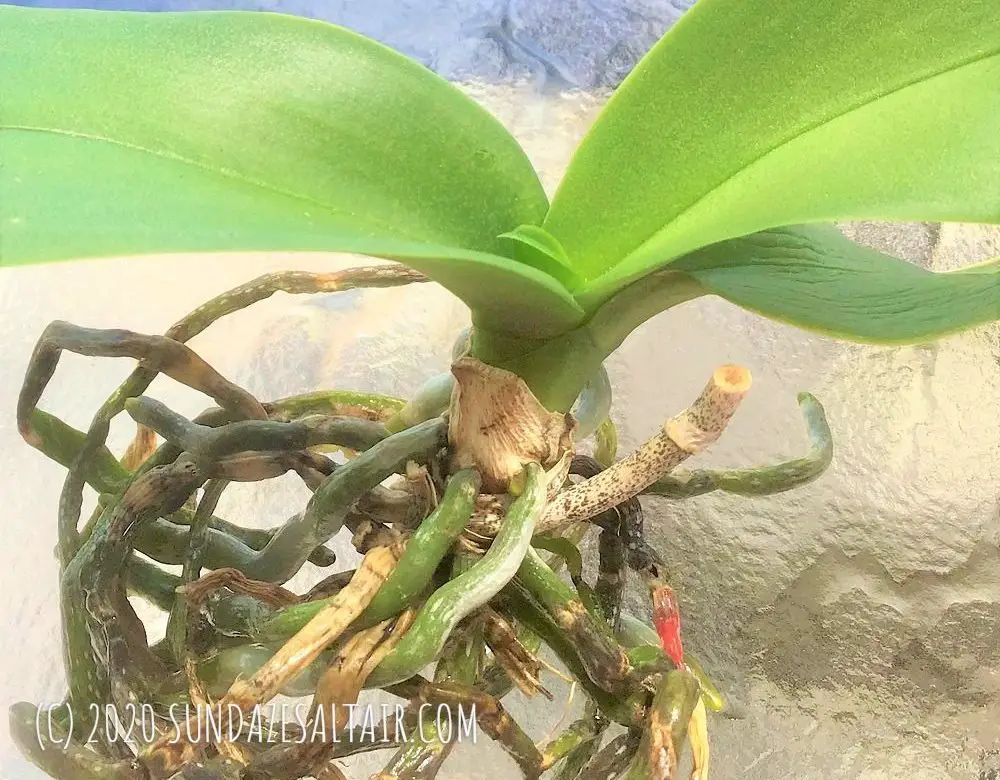
What Do Red Root Tips On An Orchid Mean? Why Your Orchid Has A Red Root Tip, & Should You Be Worried?
Are Red Root Tips On An Orchid A Red Flag? Find Out Here
Anyone who has ever grown an orchid before is familiar with the silvery-grey appearance typical of normal, if dry, orchid roots. Then of course, every orchid grower knows the feeling of satisfaction upon seeing those roots turn from silvery-grey to bright, vibrant green after a much-needed drink of water. However, when you notice your orchid’s roots suddenly turn an unfamiliar color, it can be a bit jarring, especially if that color happens to be an angry, fiery-looking red. Well, relax, because in this post, I am going to explain that, while the color itself may look alarming, things are not always what they seem. Let’s take a closer look at what may be causing those red root tips on your orchid, and whether this unusual color is a warning sign or a sign of something else…
What Can Cause Sudden Red Root Tips On An Orchid?
Have You Recently Relocated Your Orchid?
First, have you moved your orchid around? If a red-tipped root has suddenly appeared, my guess would be that you may have recently relocated your orchid, or perhaps, changed some conditions in your orchid’s environment.
For example, have you recently unpotted your Phalaenopsis and moved it outdoors? If so, there is a good chance you may notice a bright red root tip on a root that was once pure green. Or, do you have an indoor orchid you recently relocated from a Northern-facing window to a Southern-facing one? If so, I’d be willing to bet, you too may have observed this unusual root color phenomenon.
What is the common denominator in each of these situations? In each of these cases, the orchids are experiencing a recent increase in light exposure. That’s right, a red-tipped root on an orchid is often a reaction to a sudden increase in light. Let’s find out why this is and what, if anything, this means for the health of your plant.
Why Does An Increase In Light Result In A Red-Tipped Orchid Root?
According to the American Orchid Society, for some plants, going from a dim environment to one with greater light can trigger the production of a particular phytochemical called anthocyanins. Anthocyanins are a colorful chemical compound found in plants and flowers that produce blue, violet or red flavonoid pigments. It is these colorful pigments that give certain plant leaves and flowers their familiar, vibrant colors.
However, in the case of some plants, orchids included, an increase in light can temporarily trigger the production of anthocyanin pigments in just a few localized spots. In such cases, the pigments are not expressed uniformly throughout the plant but instead show up concentrated in certain areas. This appears to be the case with the sudden appearance of that mysterious red root tip on your orchid.
But, you may ask, does this red color mean my orchid is burning or getting too much sun? No, not at all! Quite the contrary for orchids as you will soon discover… Actually, signs of a “sunburned” orchid usually occur gradually and also exhibit texture changes. On the contrary, this red, reddish-blue or purple pigment color, instead of being a warning sign, is actually protective of its plant host, as well as a sign of something else…
What Is The Purpose Of Red Anthocyanin Pigments?
Anthocyanins serve a number of purposes in the plant world. First, the attractive red anthocyanin pigments attract pollinators to its colored flowers, including both hummingbirds and butterflies. However, the pigments also serve a protective purpose for its plant host, protecting foliage from ultraviolet (“UV”) radiation much like a “sunscreen” to filter out harmful rays. While this benefit may make it seem like the sudden onset of red-tipped orchid roots could be indicative of too much light, for certain plants, orchids included, it is quite the opposite. According to the American Orchid Society, for some plants, especially orchids, the sudden presence of reddish-purple anthocyanin pigments is typically an indicator of proper light levels.
Anthocyanins – A Sign You May Be Doing Something Right
That’s right, seeing this red or reddish-purple hue show up seemingly randomly on an orchid is often a sign your plant is actually receiving optimum light levels. As stated above, when triggered by an increase in light, this red or reddish-purple pigmentation typically won’t show up uniformly all over a plant, but will instead be localized. It may show up as anything from dark purple spots to an overall purple patina on a phalaenopsis leaf, a scattering at the base of a dendrobium cane, or a fiery red-tipped root. While anthocyanins may express themselves in a number of different ways, in each of these cases its presence is a sign of optimum lighting levels for the orchid.
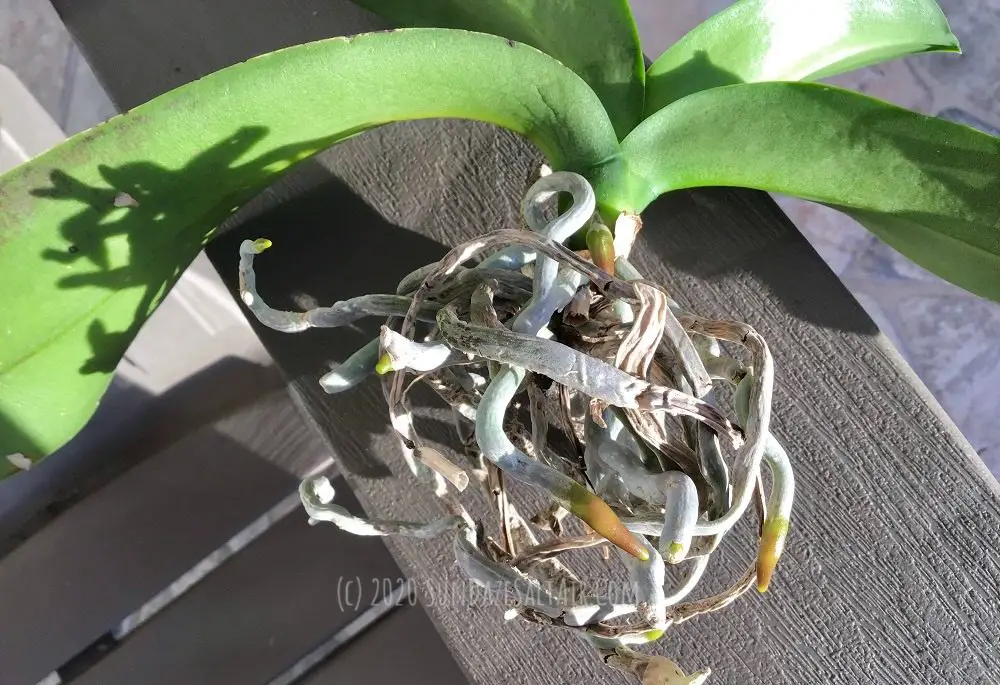
Myth Or Fact? Are Red Root Tips An Indicator Of The Color Of Your Orchid’s Future Flowers?
A common belief is that scattered reddish-purple pigments on an orchid root or cane is predictive of the color of its future flowers. While this may sound plausible, according to the American Orchid Society, it seems there is not necessarily any correlation between the appearance of red pigments on a root or cane and the color of the plant’s flowers. However…
Can You Use Your Knowledge Of Anthocyanins & Light To Modify Your Orchid’s Color?
According to the American Orchid Society, if you have white, green or yellow flowers with a scattered tint of purple and you would prefer your flower’s color pure without any purple, you can manipulate the light it receives to modify the color. Mind you, this wouldn’t work to completely alter a color, but when the color is a subtle scattering, apparently this “lighting trick” can work. To try this, allow your orchid’s buds to grow under slightly lower light levels. Doing this should produce a more pure, crisp flower color lacking any purple tones since the lower light levels should, theoretically, inhibit the expression of the reddish-purple anthocyanin pigments. Pretty amazing to know you can do that, and may explain some color changes some orchid growers report…
Read more about orchids that seem to mysteriously change their color here in this post…
Conclusion: Red Root Tips On Orchids – A Sign Of A Happy Orchid & Often Predictive Of New Growth
So, now you know, a new red-tipped orchid root is no cause for alarm. Instead, it is a sign your orchid is happily adjusting to it its new, slightly brighter home. In fact, the red root tip will eventually revert to green with time. Also, if moved back to a dimmer spot, your orchid’s root will also return to green pretty fast. However, you probably don’t want to relocate your orchid right away because these optimum light levels often coincide with something else quite exciting.
Optimum light levels can often trigger brand new growth – especially in an orchid that has spent a lot of time in the dark, dim indoors. Therefore, an orchid that is now getting its greater light needs satisfied, may start to do something it hasn’t done in a long time — grow new roots, leaves, or even begin to bloom. If your orchid is otherwise healthy in its roots, leaves and stem, a red-tipped orchid root is often a wonderful sign that you are doing something right. So, keep an eye on your orchid, as it is likely getting ready to reward you for fulfilling its needs with an exciting new “growth spurt.”
********
Have you noticed red root tips on your orchids? Tell us what you have observed about red root tips on your ‘chids in the comments.


You May Also Like
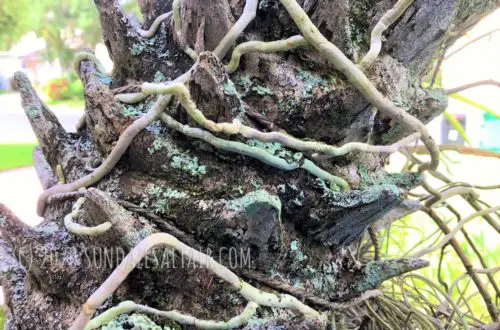
How To Easily Remove An Orchid From A Tree Even If Its Roots Are Well-Attached
August 4, 2021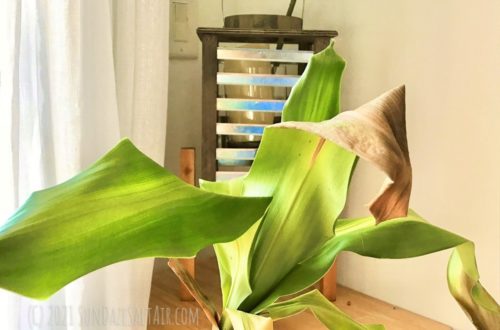
Why Are The Leaf Tips Of My Corn Plant (Dracaena) Brown & Drooping? How To Revive A Drooping Corn Plant
August 13, 2021